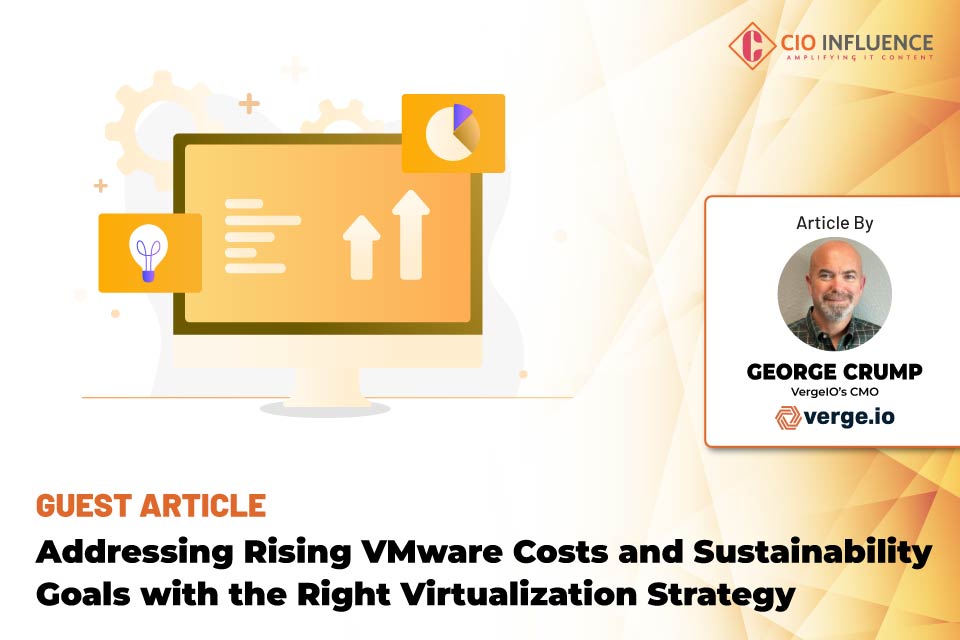With VMware’s price increases, many CIOs are facing new financial challenges. At the same time, data center sustainability has become a pressing priority, with organizations needing to reduce energy consumption, cooling costs, and their carbon footprint. These dual pressures of cost and environmental responsibility make it an ideal time for CIOs to evaluate VMware alternatives that offer both financial relief and sustainable operations.
Here’s why considering a modern VMware alternative can be a powerful solution to help CIOs control costs while supporting sustainability initiatives.
The Financial Impact of VMware’s Pricing Model
VMware’s recent price increases, in the context of complex licensing fees, have prompted CIOs to reassess their virtualization strategies. VMware’s per-core pricing model means that as organizations invest in newer, more powerful servers with higher core counts, software costs can escalate dramatically. This pricing structure has led many organizations to deploy a higher number of smaller, less efficient servers to manage software expenses—a counterproductive strategy when looking at cost efficiency and sustainability.
These VMware costs can exceed the hardware investment itself, which directly impacts a CIO’s budget. It limits the ability to adopt more powerful servers that consolidate workloads and reduce hardware requirements. Without the flexibility to use high-density, energy-efficient servers, data centers are forced into more hardware than they need, increasing operational costs.
Also Read: CIO Interview Featuring Arpan Sarkar, Senior Security Engineer at Vectra AI
Sustainability Pressures in the Data Center
As organizations are increasingly accountable for their environmental impact, data centers have become a focal point for sustainability. The reliance on excessive numbers of lower-powered servers to meet VMware’s core-based pricing requirements creates additional power demands, increases cooling needs, and requires more physical space—raising the data center’s carbon footprint.
CIOs tasked with advancing sustainability initiatives are realizing that licensing models need to support, rather than inhibit, greener infrastructure practices. The reality is that virtualization solutions should allow organizations to maximize the efficiency of high-density servers, reduce energy consumption, and extend hardware life, but VMware’s model can make this difficult to achieve.
The Right VMware Alternative Can Solve Both Cost and Sustainability Challenges
CIOs seeking relief from VMware costs and looking to enhance data center sustainability should consider VMware alternatives that adopt per-server licensing models. Unlike per-core licensing, per-server models allow organizations to deploy high-density servers without incurring additional software costs. This approach allows for fewer physical servers, reducing both initial hardware expenses and ongoing operational costs, such as power and cooling.
Here’s how the right VMware alternative can help meet both budgetary and sustainability goals:
1. Lower Total Cost of Ownership (TCO)
A per-server licensing model reduces TCO by aligning software costs with the organization’s infrastructure strategy. It allows IT teams to consolidate workloads on fewer, more powerful servers, reducing the need for large numbers of smaller servers and freeing up budget for strategic initiatives.
2. Autonomous Scale-Down for Efficient Resource Use
The right VMware alternative should provide the ability to autonomously scale down infrastructure, consolidating workloads onto fewer servers in response to changing needs. Without autonomous “scale-down” capability shrinking server footprint is a difficult, manual task, yet it is crucial for reducing operational costs and minimizing data center footprint, power use, and cooling requirements.
3. Support for High-Density, Energy-Efficient Servers
Moving to a per-server model enables organizations to maximize the efficiency of high-density, multi-core servers. This configuration reduces the number of physical machines needed, resulting in lower power and cooling costs and decreasing the data center’s environmental impact.
4. Flexible Infrastructure That Mixes Old and New Hardware
The right VMware alternative will support mixed environments, enabling CIOs to extend the life of existing hardware and add new, more efficient servers seamlessly. This capability helps IT teams avoid unnecessary hardware upgrades and reduces e-waste, all while staying responsive to performance and capacity needs.
5. Sustainability Through Fewer Servers and Lower Energy Use
By reducing server count and enhancing workload efficiency, the data center’s total energy consumption drops. Less cooling is required, and the smaller data center footprint aligns directly with sustainability goals. A VMware alternative that enables efficient hardware utilization will contribute directly to the organization’s carbon reduction targets.
Key Considerations When Evaluating a VMware Alternative
For CIOs ready to explore alternatives, it’s essential to find a solution that balances cost-effectiveness with environmental responsibility. Here are specific attributes to look for in a VMware alternative:
- Per-Server Licensing: Avoid additional costs tied to core counts by choosing a solution that licenses per server. This model encourages high-efficiency hardware adoption without penalty.
- Proactive Resource Management: Look for virtualization platforms that include AI and machine learning capabilities to intelligently balance workloads and respond to changes in infrastructure health. If an older server fails, for instance, workloads should be automatically migrated to maintain uptime and reduce disruptions.
- Mixed-Generation Hardware Support: A virtualization platform that accommodates servers of various generations and from different manufacturers enables a gradual transition to newer technology, minimizing e-waste.
- Built-in Redundancy and Parity: Advanced alternatives to VMware offer built-in redundancy and even cluster-wide parity that protect against hardware failure without requiring duplicate hardware, reducing the data center’s footprint.
Also Read: In the Era of AI, Choose Substance Over Style
A Sustainable, Cost-Effective Path Forward
For CIOs navigating VMware’s rising costs and seeking to enhance sustainability, the solution lies in finding a virtualization platform that combines financial efficiency with sustainability benefits. By transitioning to a VMware alternative with a per-server model, autonomous scale-down capabilities, and resource-efficient features, CIOs can achieve budget relief and reduce their data center’s environmental impact without sacrificing performance or scalability.
The right VMware alternative will support sustainable growth by reducing energy demands, optimizing hardware use, and eliminating the constraints of core-based licensing. In today’s era of rising costs and heightened environmental awareness, this dual benefit provides a strategic advantage that forward-thinking CIOs can’t afford to overlook.
[To share your insights with us as part of editorial or sponsored content, please write to psen@itechseries.com]


